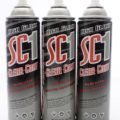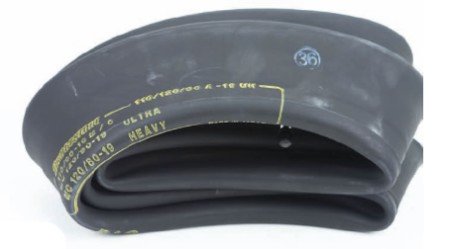
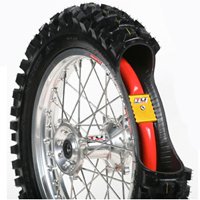 For example, take the Tubliss system by Nuetech. This great product eliminates the need for anything other than air in your tire, meaning pinch flats become a distant nightmare and backcountry punctures can be easily repaired with a plug. No more struggling to patch a tube on the trail or attempting the emergency fix of packing a tire with foliage, brush, or deer poo just to get home. There’s also been many claims of improved traction and weight savings, which are valid selling points, but I’m a recreational rider and not necessarily always looking to squeeze every ounce of performance out of my bike.
The problem I see with the TuBliss system is that plugs are supposed to be a temporary fix and the tire should then be replaced or at least patched. If you’re going to patch it you’re going to pull it off the rim which you’d have to do to anyway to replace a tube. Yes, pulling a tire in the comfort of your shop, garage, or living room beats wrestling with it on a trail but it can still be an arduous task. And at $100 a piece, they’re a little pricey. Although I will admit that in the long run these have the potential to actually be cheaper than tubes depending on how long they last. This brings up something else I feel strongly about – when it comes to certain things I’m cheap.
For example, take the Tubliss system by Nuetech. This great product eliminates the need for anything other than air in your tire, meaning pinch flats become a distant nightmare and backcountry punctures can be easily repaired with a plug. No more struggling to patch a tube on the trail or attempting the emergency fix of packing a tire with foliage, brush, or deer poo just to get home. There’s also been many claims of improved traction and weight savings, which are valid selling points, but I’m a recreational rider and not necessarily always looking to squeeze every ounce of performance out of my bike.
The problem I see with the TuBliss system is that plugs are supposed to be a temporary fix and the tire should then be replaced or at least patched. If you’re going to patch it you’re going to pull it off the rim which you’d have to do to anyway to replace a tube. Yes, pulling a tire in the comfort of your shop, garage, or living room beats wrestling with it on a trail but it can still be an arduous task. And at $100 a piece, they’re a little pricey. Although I will admit that in the long run these have the potential to actually be cheaper than tubes depending on how long they last. This brings up something else I feel strongly about – when it comes to certain things I’m cheap.
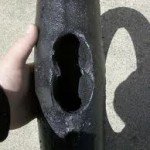
MOUSSE FOAM HAS THE POTENTIAL TO MELT AT EXCESSIVE SPEEDS – NOT THAT ANY OF US WOULD KNOW ABOUT SPEEDING.

USING UN-VULCANIZED RUBBER FOR A TUBE WOULD BE ILLOGICAL
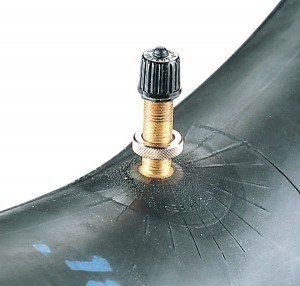 The valve stem is the weakest point of any inner tube. If the tire spins on the rim it can cause the tube to shift along with it. This means a tug of war between a tube that moves and a valve stem that doesn’t, with the valve stem almost always losing. Using heavy duty tubes can help decrease the odds of getting a puncture or pinch flat and offer a longer service life but it’s still susceptible to having the valve stem torn. Anybody who doesn’t know to leave the valve stem retaining nut loose needs to read this tip.
Heavy duty tubes also give you an option that foam inserts don’t – you can adjust the air pressure. I’ve run pressure under 10lbs without consequences, even after hitting rocks hard enough to dent my rim and knock a few teeth loose. Although in all honesty I did spend the next 30 minutes stopping repeatedly to see if my tire was going flat. One thing to keep in mind with inner tube air pressure is that it can increase by as much as 4lbs when the tire heats up during use.
Admittedly, using heavy duty tubes may provide a stronger line of defense against pinch flats but can’t eliminate them all together. Advancements in tubeless and foam insert products are a great thing and I hope someday someone will come up with an alternative to conventional tubes that is economical, low maintenance, and holds up to high speeds. Until they do I’ll keep using the reasonably priced, tried and true technology of heavy duty inner tubes – but only because I’m a man of strong convictions.
The valve stem is the weakest point of any inner tube. If the tire spins on the rim it can cause the tube to shift along with it. This means a tug of war between a tube that moves and a valve stem that doesn’t, with the valve stem almost always losing. Using heavy duty tubes can help decrease the odds of getting a puncture or pinch flat and offer a longer service life but it’s still susceptible to having the valve stem torn. Anybody who doesn’t know to leave the valve stem retaining nut loose needs to read this tip.
Heavy duty tubes also give you an option that foam inserts don’t – you can adjust the air pressure. I’ve run pressure under 10lbs without consequences, even after hitting rocks hard enough to dent my rim and knock a few teeth loose. Although in all honesty I did spend the next 30 minutes stopping repeatedly to see if my tire was going flat. One thing to keep in mind with inner tube air pressure is that it can increase by as much as 4lbs when the tire heats up during use.
Admittedly, using heavy duty tubes may provide a stronger line of defense against pinch flats but can’t eliminate them all together. Advancements in tubeless and foam insert products are a great thing and I hope someday someone will come up with an alternative to conventional tubes that is economical, low maintenance, and holds up to high speeds. Until they do I’ll keep using the reasonably priced, tried and true technology of heavy duty inner tubes – but only because I’m a man of strong convictions.



